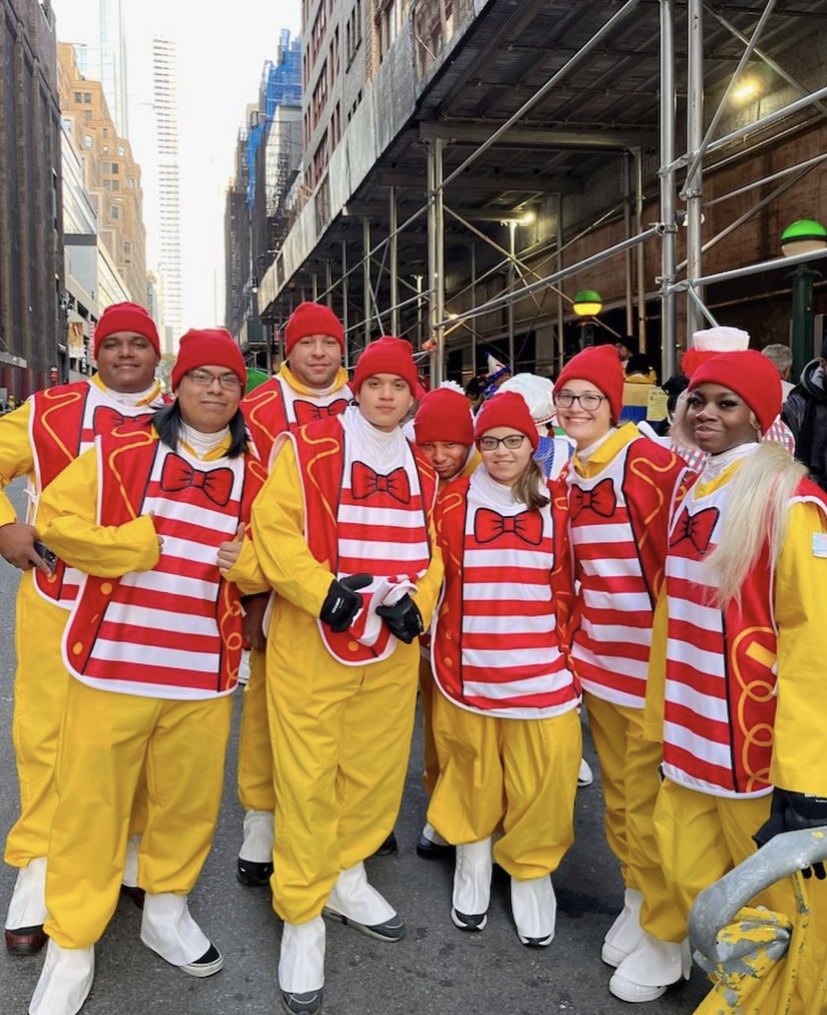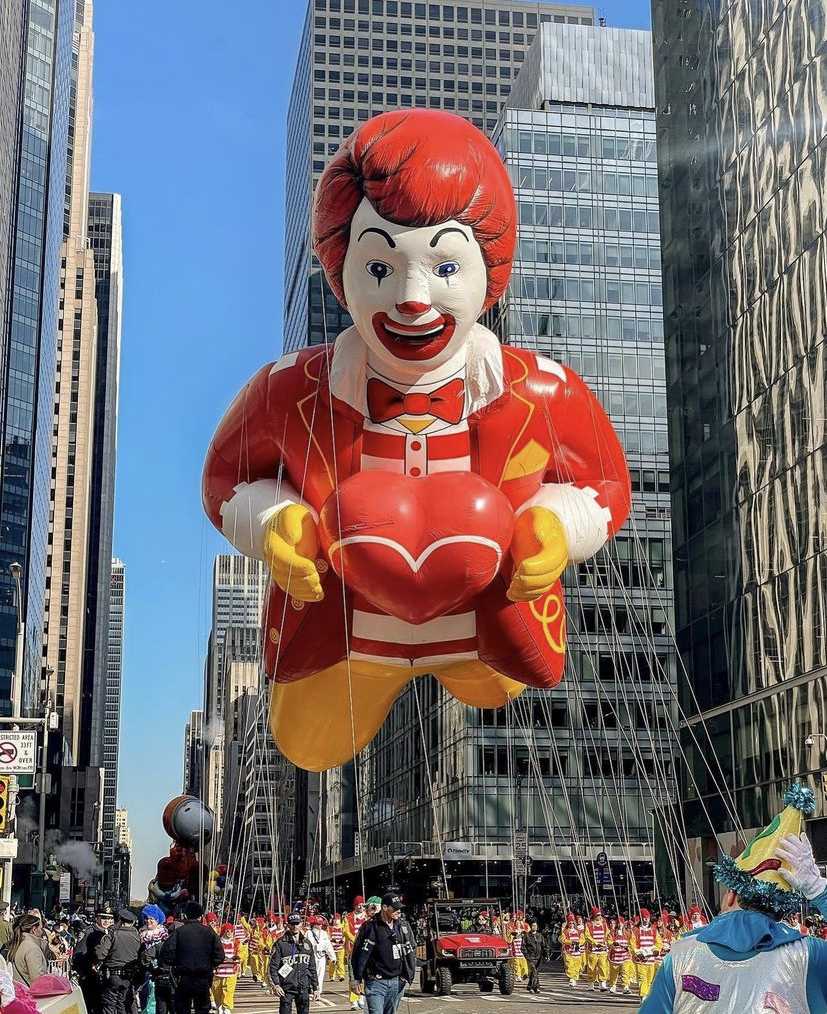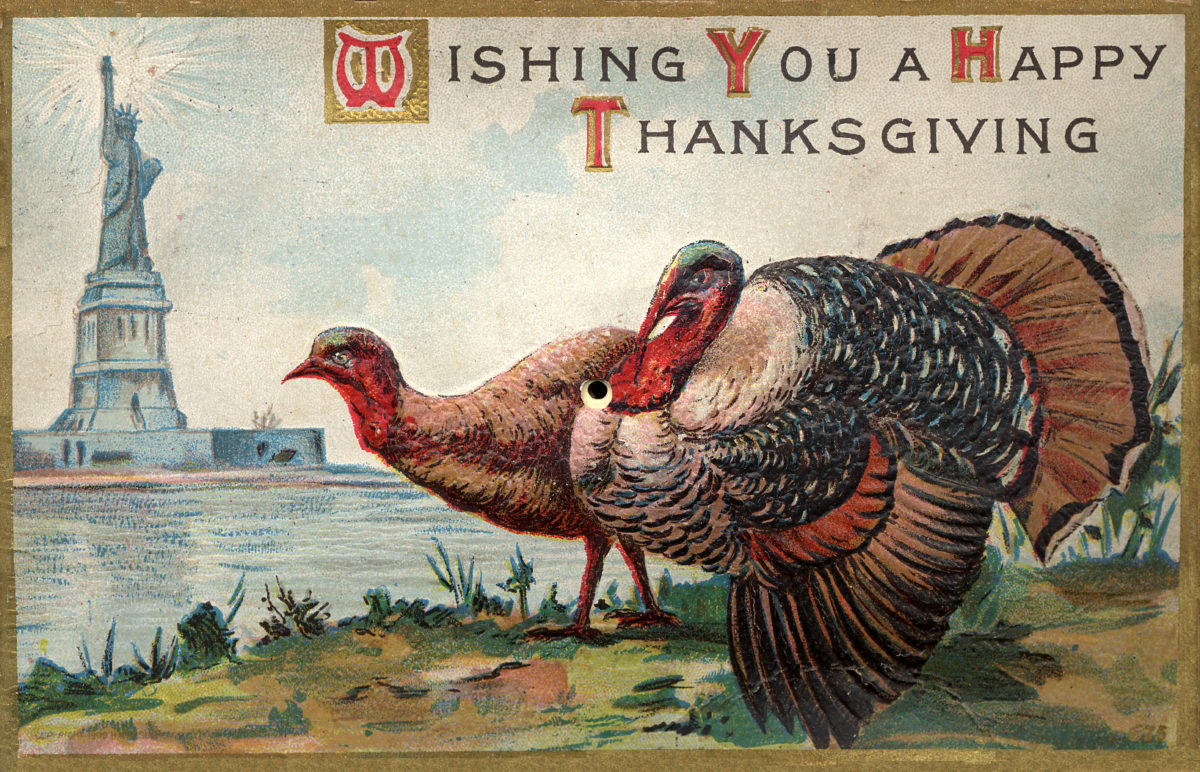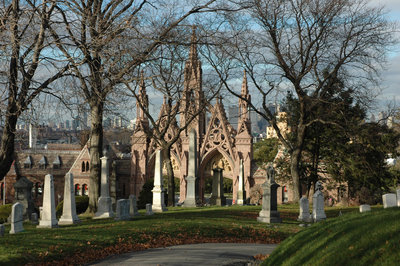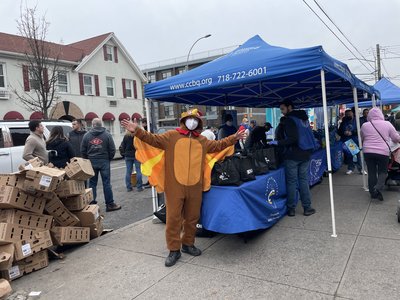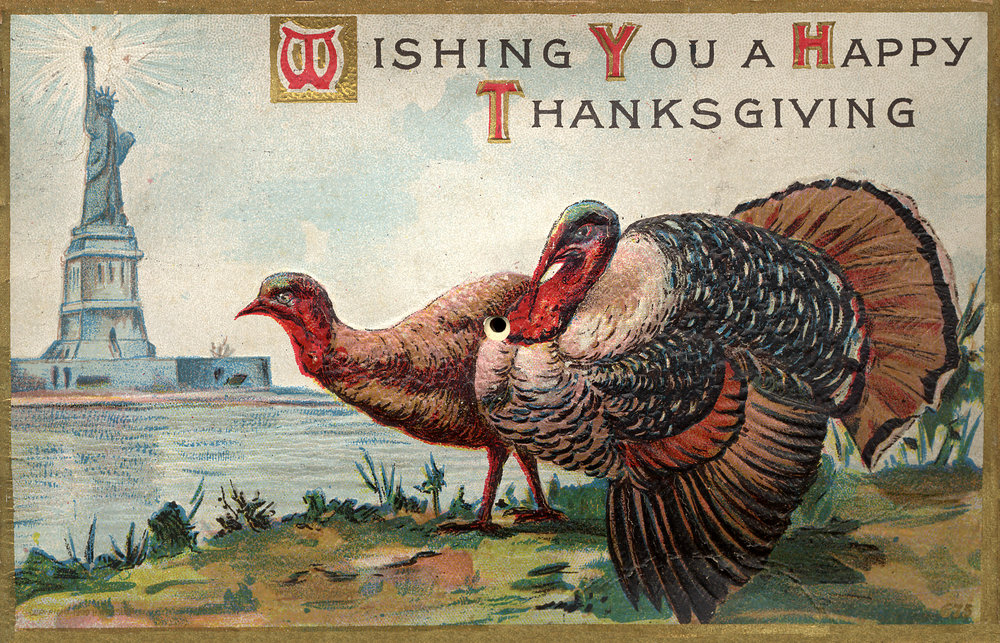Reviving forgotten postcard treasures
By Michael Perlman
mperlman@queensledger.com

An early 1900s gobble-producing mechanical postcard.
Historians consider the first Thanksgiving meal to date to 1621, where 53 Mayflower pilgrims and 90 Wampanoag Native Americans at Plymouth shared an autumn feast for a three-day period.
Thanksgiving traditions came to life through highly stylized and vibrant hand-colored lithograph postcards.
Today, they are considered to be collectible works of art.
In 1873, the first American picture postcard was designed.
A significant number of postcards of the late 19th and early to mid-20th century exist in good to excellent condition and feature handwritten messages and one-cent and two-cent stamps.
Deltiology is the collection and study of postcards, which derives from “deltion,” a Greek term for a writing tablet or letter. Therefore, a postcard collector is known as a deltiologist.
Several decades ago, postcards could be found at a corner pharmacy, but today they can be purchased at postcard shows and estate sales or on eBay. Amazingly, the topics represent nearly every theme imaginable, capturing the history of hometowns and hobbies to holidays.
As a deltiologist, it is timely to explore the artistry and history associated with Thanksgiving postcards by pinpointing highlights.
Mechanical postcards are most interactive and were cleverly engineered, which is why such postcards continue to operate approximately 120 years later.
In one postcard, a collector lightly presses the stomach of one of two elaborately illustrated turkeys, and it produces a “gobble.”
Steps away is the Hudson River with lustrous rays from the Statue of Liberty in the background. The application of color evokes the feeling of a watercolor painting.
The “Macy Color Views of New York” postcard series captures the magic of the Macy’s Thanksgiving Day Parade as of 1939, a year that is more recent than nearly all Thanksgiving postcards. This chrome postcard features a toy soldier float making its way alongside the Columbus Monument.

The 1939 Thanksgiving Parade, R.H. Macy & Co. series.
A caption reads, “Annual mile pageant of giant helium-filled balloons escorts Santa Claus to the world’s largest store at Broadway & 34th Street.” Since postcards are the catalyst for historic research, the viewer learns that the parade originated in 1924 and once featured animals from the Central Park Zoo.
Then floats were introduced and would be released into the air with a return address. If one was fortunate enough to find it after the parade ended, they would be a prize winner.
Some Thanksgiving postcards are embossed, adding an engaging feel to the realistic, yet dreamy hand-colored images, coupled with illustrations known as add-ons.
A divided back postcard from 1910 has “Thanksgiving Series Number 906” printed on the back, with the name A.S. Meeker, N.Y, granting insight on its publication.

It features a harvest theme with apples, grapes, corn, wheat and a pumpkin as part of a border formed by branches with Elm tree leaves.
It frames a river scene consisting of a rich autumn sky over a river with a farmhouse and a cow grazing. A turkey walks along the branches, overlooking the scene.
Other postcards in this series feature similar imagery and design details, hence telling a story.
A significant artist was Ellen Hattie Clapsaddle (1865 – 1934), whose style has drawn much admiration, making her the most prolific postcard and greeting card artist of her time.
In one of her signed postcards, children have big eyes on a pie after presumably baking it, considering their hats.

A product of the famed artist Ellen Clapsaddle.
The postcards offer a lesson within themselves when it comes to calligraphy, as each one is personalized.
Some of her postcards were accompanied by poetry: “Oh sing a song of pumpkin pies; And turkeys roasted brown; Thanksgiving Day is here again. And come this year to crown. Oh pray receive my wholesome wishes, For well-prepared Thanksgiving Dishes.”
This postcard was produced by International Art Publishing Company of New York and Philadelphia, as evident by a logo on the reverse featuring an eagle landing on a planet.
This subsidiary was founded by Wolf & Co. and Art Lithographic Publishing Co. to assume production of their souvenir and holiday postcards.
They were significant as a publisher of artist-signed cards and operated largely between 1895 and 1915.
Their firm was located at 3 and 5 Waverly Place in New York.
John Winsch (1865 – 1923) of Stapleton, New York was co-manager of the Art Lithographic Publishing Company.
He copyrighted his artist signed greeting cards, where many were published in sets, and produced approximately 4,000 designs between 1910 and 1915.
He was highly recognized for his Thanksgiving and Halloween postcards. He also used European artists who worked with his German printers.
His circa 1909 postcard, printed in Germany, consists of a black and white photographic window into nearly a few hundred years earlier, where pilgrims are preparing for their meal.
It is offset by a Victorian green, red and golden yellow color scheme, which dominates the large frame featuring ornate details, corn, a fall moon and triumphant instruments.
Some of Winsch’s cards feature poetry such as that of John Greenleaf Whittier (1807 – 1892).
An excerpt from his work, “Peace Autumn,” reads: “Thank God for rest, where none molest, And none can make afraid, for Peace that sits as Plenty’s guest, Beneath the homestead’s shade.”

Artist John Winsch & poet John Greenleaf Whittier: Significant art coming together.
He was noteworthy as an American Quaker poet, an advocate for abolishing slavery and a founder of “The Atlantic Monthly.”
His friends included Mark Twain and Frederick Douglass. His poetry reflected rural life, religion and nature.
The pilgrims’ arrival at Plymouth Rock was featured on a postcard by Raphael Tuck & Sons, where traditional colors, texture and emotions are brilliantly captured.
This firm was founded in London by Raphael Tuck (1821 – 1900) and operated from 1866 to 1959. Other locations included Paris, Berlin, Montreal, and 298 Broadway and 122 – 124 Fifth Avenue.
In 1894, his son, Adolph Tuck, created their first picture postcard.

Pilgrims’ arrival at Plymouth Rock by the significant firm, Raphael Tuck & Sons.
This prominent publisher was considered “Art publishers to their majesties the king and queen,” as noted on the reverse of their postcards, since Queen Victoria granted them the Royal Warrant of Appointment in 1883. These postcards are among the most desirable by collectors.
Certain postcards offer a lesson in patriotism, where at least one in the Gottschalk series exhibits a very rare 47-star American flag, symbolic of New Mexico’s addition in January 1912. The flag was active for only a month.

Victorian masterpiece, Gottschalk series with a rare 47-star American flag, 1912.
The colorful and highly stylized postcard series frequently says “Thanksgiving Greetings,” and this card also features an ornate gold embossed border, flowers and fruits marking a prosperous harvest, as well as a family of turkeys with teepees forming the backdrop.
Gottschalk, Dreyfuss & Davis Co. Ltd. was active from 1904 to 1915 and operated offices in New York, London and Munich.
Sometimes a menu was brought to the recipient; not always in the form of food, but a selection of blessings.
One such Gilded Age style postcard in this series features a pilgrim boy and girl, shoulder to shoulder, holding up graceful desserts, while a turkey, pumpkin and leaves add much character.
The entrée menu reads: “Health a la Wealth, Prosperity, Garnished with Joys, True Love, Happiness, Long Life.”

An E. Nash “Health a la Wealth” menu postcard.
Grapes are depicted on the menu as a symbol of abundance and good fortune.
This circa 1910 series was produced by New York publisher E. Nash.
Among the best Thanksgiving postcards highlights a Victorian-era family, ready for their cozy feast, marked by an elegant table setting under a gas lamp.
One artist brilliantly captured the anticipation between a husband and wife with a “Home Sweet Home” frame over the mantel, and a cat that is ready for the occasion, with a bowtie.
Embossed in gold leaf is “Welcome Thanksgiving Day.”
The design has a 1908 copyright by M.W. Taggart, a New York City-based firm from 1905 to 1910. Their specialty was holiday and greeting postcards with patriotic and humorous themes and a superb use of primary colors.

“Welcome Thanksgiving Day” by M.W. Taggart, 1908.
Many postcards feature handwritten messages, often with fine penmanship, either written with a fountain pen or in pencil.
It reads: “Dear Teacher, This card is from Carlie Strumguist. Wishing you a Happy Thanksgiving. Good bye.” The recipient is Frances C. Smith.
Over a century later, the spirit of past generations has its way of communicating.
